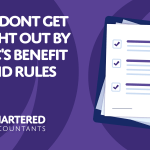Like most business sectors technology has not simply changed accountancy, it has revolutionised it.
We’re sure those aged 40 plus can relate to many of these memories.
Practices back in 1990 had one computer between 30 (a computer operator was the only person allowed near the computer), a printer (attached by a cable to the computer), a fax machine and 2 word processors operated by 2 full time typists.
Accounts were produced on some pretty basic accounts software but the data was inputted by the aforementioned computer operator and if you wanted your accounts putting to the front of the queue you pretty much had to resort to begging or bribery.
All the accounts were produced on paper and they were discussed / approved either in person or via Royal Mail although the tech savvy clients may have received their accounts via fax!
A few larger clients did invest in accounts software but many of them were still using manual books (or ledgers) back then. It would take a trainee days or even weeks to extract the balances from these records and because of the time (and cost) involved many of these businesses would only produce accounts once a year.
Time recording software did exist back then but all of the team had to complete manual timesheets for the computer operator to input. Some of the senior partners’ writing was almost illegible which usually lead to a series of expletives being heard from the general direction of the computer every Monday morning.
Looking back, even producing something as simple as a letter was a major project back in the day. The partners had dictating machines but others had to write a letter out. These would then be passed to the typists who would proceed to try and interpret your garbled tape / scribbled letter at some point during the day / week depending on how important you were or how loudly you shouted.
Eventually the letter would make its way back to you and would contain several typos if you were lucky, entire missing paragraphs in some cases.
The letter would then be returned to the typists (ideally when they were out on their lunch hour so you didn’t receive a torrent of abuse about how poor your writing was) and would be passed back to you at some point ready to be handed over to the good old Royal Mail who may or may not deliver the letter. If it did arrive then more often than not it was ripped or wet or had lost some of its contents.
Once it did arrive the recipient would pretend it hadn’t so they didn’t have to start working on it until convenient to them.
So, fast forward to 2017. We’ve gone from having 1 computer between 30 of us to having 3 or 4 each if you include laptops, smart phones and tablets. Multi screens enable our team to multi task. Accounts software automatically links to on-line bank accounts so management information can be produced at the touch of a button without the need for an accountant to spend days extracting and completing the information.
Typists and computer operators have been replaced with business advisers and software trainers / supporters.
Paper accounts have been replaced with electronic documents stored in client portals along with a library of historical financial information that can be accessed from anywhere in the world.
Clients can Live Chat to advisers out of hours and tax returns can be prepared, discussed, approved and submitted in a matter of hours rather than days.
The office of a 21st century accountant looks completely different to that of a 20th century one. Floors full of filing cabinets have been replaced with electronic document management systems and a paperless environment means the modern accountant can work seamlessly from home, at a clients or on the move. They also, thankfully, do not smell of tobacco.
The internet age has meant that our clients expect an answer immediately. If we can’t give it to them then they’ll go somewhere that can and we’ve had to structure our business accordingly.
So, technology has without a shadow of a doubt revolutionised accountancy and we can’t wait to see what the future holds for us and business in general.




